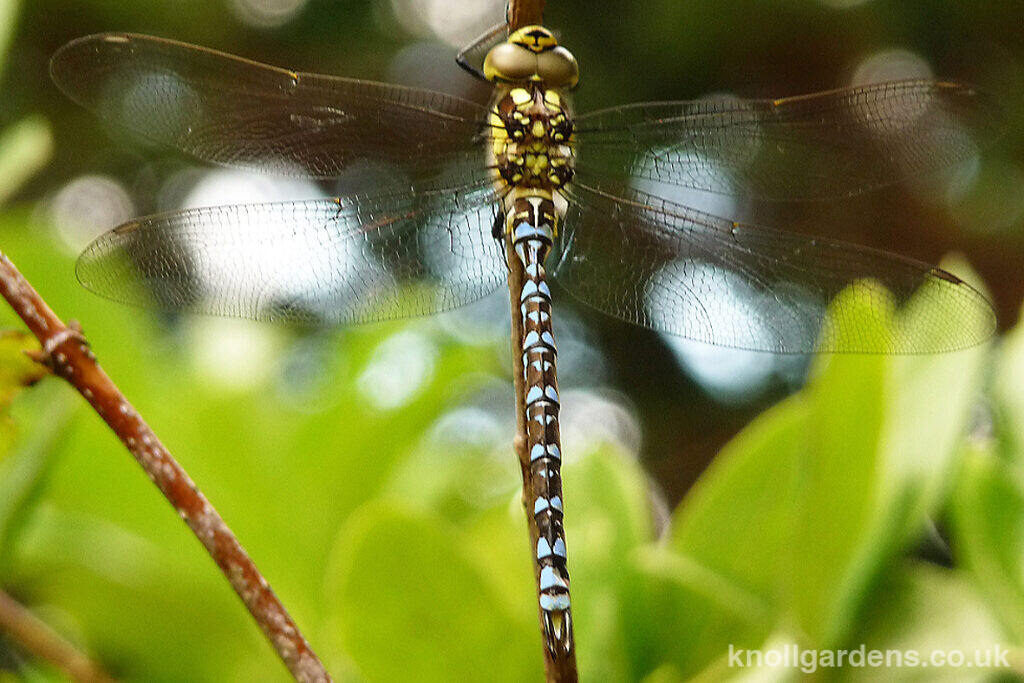The Knoll Gardens Foundation (Reg Charity 1159390), is dedicated to achieving a better understanding of the balance between Knolls naturalistic ethos and the gardens wildlife. As part of this work the charity undertakes a number of surveys within the gardens, and this gallery showcases all the dragonflies, demoiselles and damselflies that have been recorded at Knoll Gardens to date.
With huge thanks to Keith and Anne Powrie whose impressive knowledge and ongoing enthusiasm has resulted in the detailed surveys and understanding that we have of this beautiful group of insects in the garden. All images courtesy of Keith Powrie unless stated otherwise.
Damselflies are small and delicate. The settle with their wings held close and parallel to their body. Their eyes are separated, on each side of their head, giving them 360° vision, as they are often prey to their larger cousins, the Dragonflies.
Demoiselles are a riverine species which are generally stockier than damselflies and have a metallic appearance and coloured wings.
Dragonflies are much larger and more robust than Damselflies. When settled, they hold their wings out, perpendicular to their bodies. Their eyes touch at the front of their head, giving them binocular vision, as they are the predators of almost any other flying insect.
The first dragonflies to emerge are usually the Chasers. They all have coloured bases to the wings and their abdomens are adorned with yellow patches at the edges of each segment. Adult males of some species gain a powdery coating, usually blue, which can mask these yellow patches. When mating, the female grasps the males body which can remove some of this coating, or pruinescence, leaving a dark patch – thus one can tell whether a male has mated or not.






























